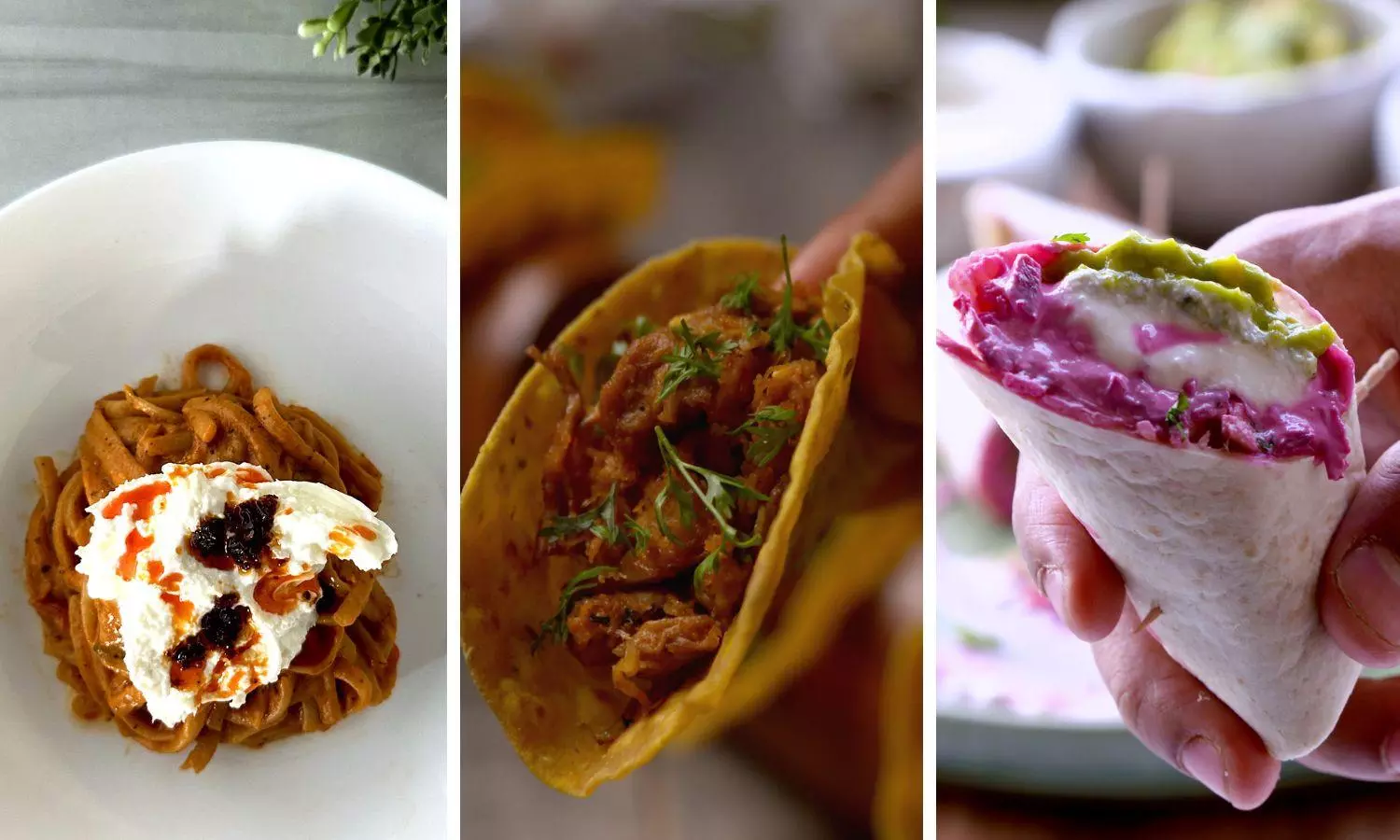The rise of fusion cuisine: divided by cultures and united by sustenance
From the streets that birthed the Manchurian Dosa to the restaurants that invented the Buratta Papdi Chaat, here's a brief insight into the revolution of fusion cuisine
- By Natasha KitturLoading...
- | 19 Dec 2023 5:32 AM GMT
 X
X
The culinary world is ever-evolving, and in recent years, a fascinating trend has taken the food landscape by storm – the rise of fusion cuisine. This innovative approach to cooking involves the seamless blending of traditional recipes from one cultural background with flavours and techniques from another. I am pretty sure all of you at some point may have heard of the likes of baklava barfi, paneer shawarma or even something as simple as an Indian-style masala pasta.
While Indian cuisine itself is a fairly vast and diverse topic, a particularly intriguing avenue within this culinary revolution is the fusion of traditional Indian recipes with various foreign cuisines. A lot of the results of fusion cuisine is quite evident in the menus of upcoming cafes and restaurants. To gain some insight on the matter we reached out to Sandeep Nagaiah—the co-founder of Paper & Pie, an upcoming opulent cafe in Bengaluru. ‘The fusion of international cuisines with Indian fare reflects changing and evolving culinary preferences, showcasing a globalised food culture. Indian cuisine is known for its rich and diverse flavours and integrating it with the varied taste profiles of international cuisines creates unique and exciting combinations that appeal to a wide range of consumers’ said Mr. Nagaiah, providing insight on how certain quirky recipes gain unimaginable popularity. He also added, ‘the realm of fusion cuisine serves as a canvas for a chef’screativity. And while the challenge of combining these elements is exhilarating, the unwritten rule in fusion cooking remains winning consumer (or viewer) acceptance, often achieved through relatable flavours along with a distinct and appealing taste profile.’
The fusion of Indian and foreign cuisines is like a culinary symphony where each ingredient plays a unique note, contributing to a harmonious composition. Chefs, both in India and globally, are experimenting with this amalgamation, creating dishes that transcend cultural boundaries. And it should be duly noted as well that this trend is not one-sided. While Indian flavours are being integrated into foreign cuisines, fusion cuisine in some ways does its part in putting the Indian fare on the global map.
When we asked chef Ishijyot Surri—who has himself embarked upon a journey to introduce foreign flavours to Indian cuisine through his restaurants MULK, Copper Parrot, Pachinco Café and Miniya-Turk—what the growing popularity of fusion cuisine would mean for India’s culinary scenario, he said, ‘exploring diverse flavours has opened an incredible world of creativity for chefs like myself. Fusion cuisine beautifully marries Eastern and Western tastes, crafting dishes that thrill and satisfy—think Chicken Tikka Pizza, Butter Chicken Tacos and Paella Biryani. What's truly captivating about fusion cuisine is its knack for transforming classics. And this culinary revolution has pervaded all the courses of our meal, right from appetisers and snacks to desserts, like a Gulab Jamun Cheesecake that seamlessly blends Indian sweets with Western flair. Fusion food isn't just about taste; it's a celebration of diverse culinary traditions, showing how mixing influences creates incredible flavours.’
The digital age has facilitated the sharing of recipes and culinary ideas on a global scale. With a few clicks, a chef in India can draw inspiration from a viral fusion dish created by a chef in New York. This cross-pollination of ideas has sped up the evolution of fusion cuisine, creating a dynamic culinary landscape that is constantly pushing boundaries. Beyond the culinary adventure, fusion cuisine serves as a powerful bridge between cultures. It fosters an appreciation for diversity, encouraging individuals to embrace and celebrate the best of both worlds. As this trend continues to captivate taste buds and inspire culinary innovation, each dish becomes a testament to the universality of good food, irrespective of its cultural origins.

Natasha Kittur
Natasha Kittur is an aspiring writer. Her love for anything with cheese and spice is profound, but a white sauce pasta always tops her list. In her free time you will catch her reading or watching crime books and shows or go on and on about psychological experiments and theories. She aims to write a book in the fictional genre someday.



